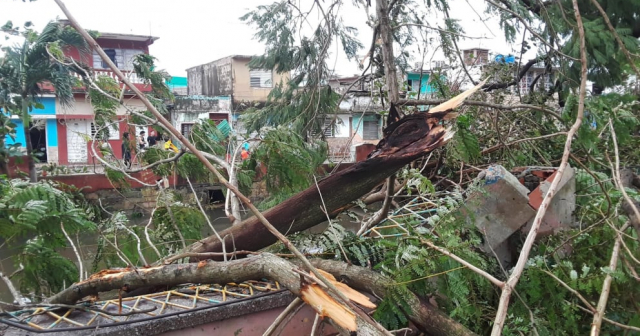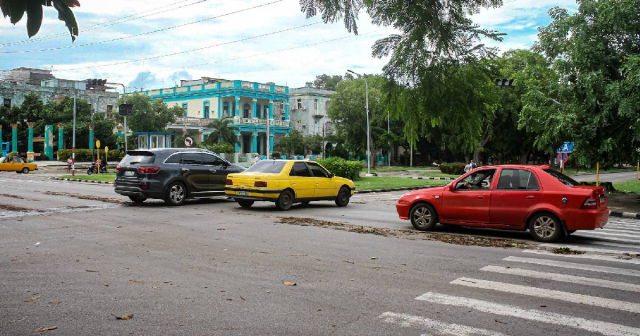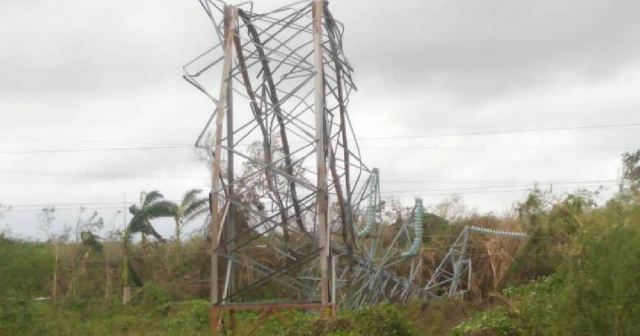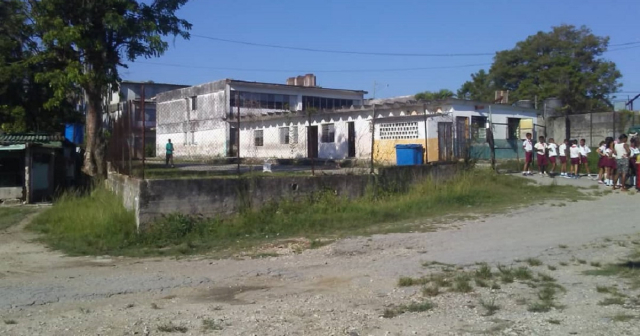At least 461 total or partial collapses have been reported so far due to the impact of the powerful Hurricane Rafael on Havana, according to a preliminary report released by authorities in the Cuban capital this Thursday.
"Havana was severely impacted," stated the province's governor, Yanet Hernández, at a press conference, detailing that the damage to homes and other buildings included collapsed walls, stairs, and detached lightweight roofs. However, she did not disclose the total number of collapses that occurred.
Hernández reported that 495 downed electrical poles and numerous fallen trees were recorded due to the storm's winds, according to the EFE news agency.
Cuban authorities have not reported any deaths in the provinces that experienced the most significant damage from the hurricane—Artemisa, Havana, and Mayabeque—where over four million people live, more than two million of whom are in the capital.
In a preliminary report on Thursday morning, the Cuban government revealed that the province of Artemisa has experienced "the most significant damages, particularly in hospitals, schools, service centers, homes, roofs, and the electrical grid."
According to the initial information, by that time, damage had been recorded in Havana to approximately 77 homes, 21 educational centers, and seven hospitals, as well as to electrical connections and the city's greenery.

Meanwhile, in Mayabeque, the primary damages were recorded in agriculture, particularly in banana and cassava crops. In the Isle of Youth, there were "minor damages" to homes and state buildings, with the most significant impacts occurring in the tourist destination of Cayo Largo del Sur. In the province of Pinar del Río, no damages were reported, according to Cuban authorities.
The Havana governor stated in the press conference that 98,345 people were evacuated to protection centers prepared in the capital and to the homes of relatives and friends.
Nevertheless, there were individuals who had to be rescued amidst the cyclone's onslaught due to collapses in their homes.
Hernández also spoke about the recovery efforts in Havana, which include waste collection and the cleaning of access routes to the airports and bus and train terminals. He also announced the resumption of operations at José Martí International Airport and others, such as "Juan Gualberto Gómez" in Varadero, Matanzas province.
Regarding the blackouts, the official stated that efforts are being made to restore service, but "it is a difficult task, especially due to the fallen power lines," EFE pointed out.
Hours before the hurricane made landfall in Cuba, a complete disconnection of the National Electric System (SEN) occurred.
According to a statement from the Electric Union (UNE), at 2:48 p.m. on Wednesday, the strong winds associated with the cyclone, which had intensified as it advanced toward western Cuba, caused a power outage in the national electrical system, marking the second major blackout in the country in less than three weeks.
On the afternoon of this Thursday, an electrical subsystem that extends from Matanzas to Holguín was restored through the integration of thermoelectric plants, Energas Varadero, and distributed generation facilities in those regions.
However, the provinces of La Habana, Mayabeque, and Artemisa still remain without electricity. According to the authorities, they were assessing the transmission networks and working on the review of the affected lines to restore service as quickly as possible. The strong winds from the cyclone destroyed several high-tension towers located along the Havana-Artemisa highway.
Hurricane Rafael, the second to strike Cuba in just over 15 days, has dealt another severe blow to the country, which has been grappling with an economy in ruins due to the deep crisis it has been experiencing for at least five years.
During the afternoon and evening of this Wednesday, the cyclone crossed the western tip of the island, moving from south to north, initially as a Category 3 hurricane on the Saffir-Simpson scale, which has a maximum of 5, and was later downgraded to a Category 2. Its maximum sustained winds reached 185 km/h, and rainfall totaled up to 200 liters per square meter, resulting in widespread flooding and significant destruction everywhere.
What do you think?
COMMENTFiled under:






